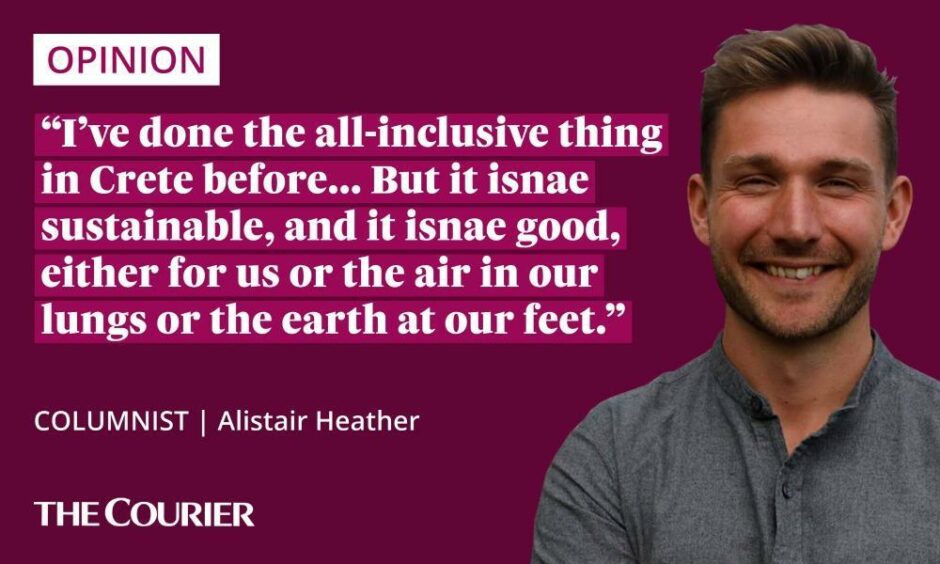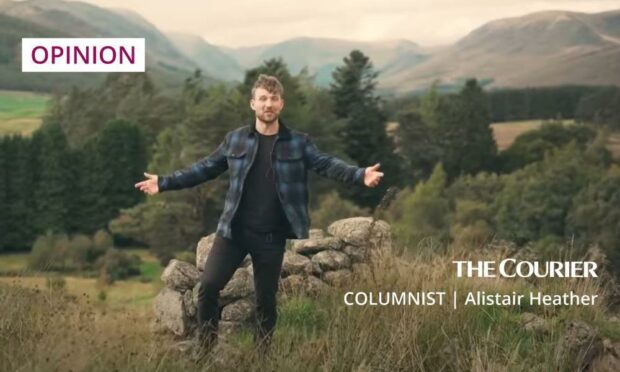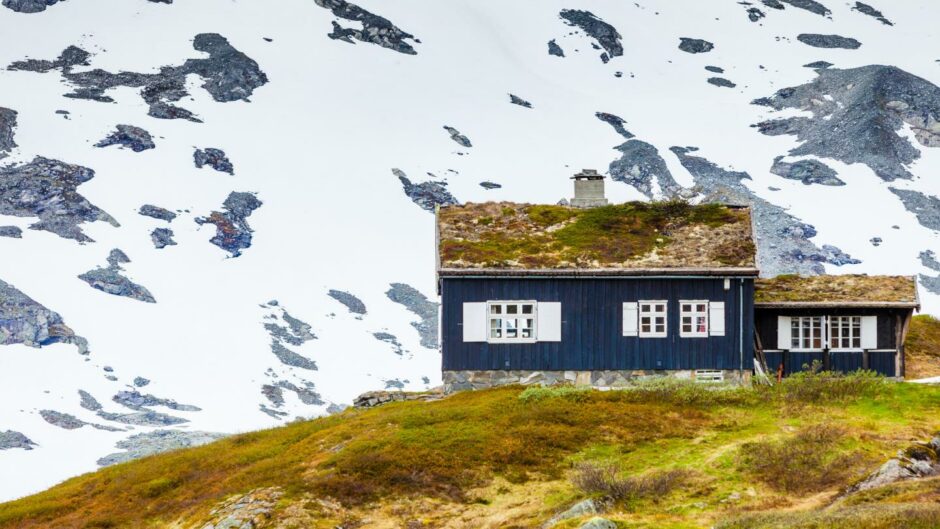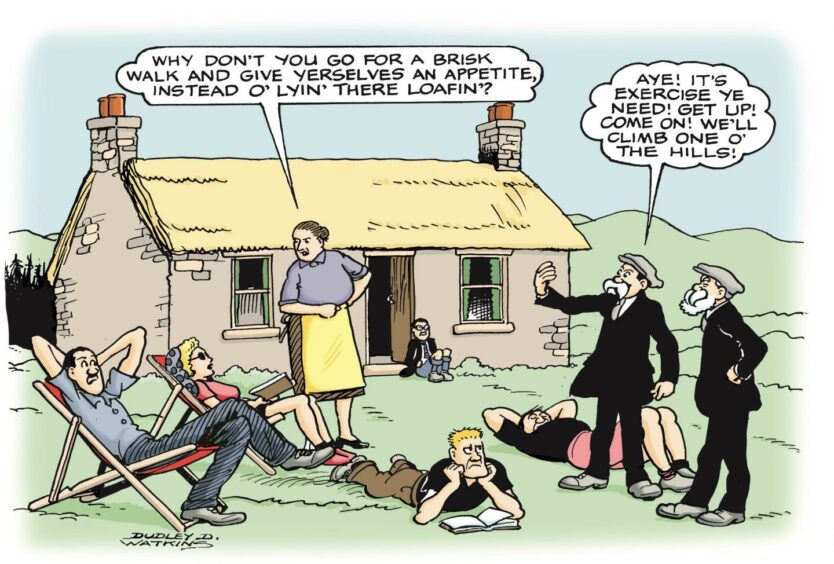COP26 demands that we come up with a new future. Here’s mines.
For a recent project I visited a few sheilings in the Angus glens. You’ll likely have driven by the spot yourself: it’s on the road up Glen Clova towards the Clova hotel, Glen Doll and the popular Munros Meyer and Dreish.
The sheilings are hip-high foundation drystane dykes of undressed stone, demarcating dwellings on the hillside.
Plants grow high around and through them now.
I think they have a learning for us as we confront climate change.

Sheilings are cool. They were summer houses for rural people into the 1700s in Angus, and longer elsewhere.
We’d spend the long winter months in the glen floor, living in a normal, humble and permanent home fae the harvest onwards.
Then, when the weather grew warm the women of the community would migrate up a few hundred feet, taking all the grazing animals to the sweet summer pasture.
Old and young would travel together in a caravan up grass paths inherited from vanished generations.
The females would rebuild the turf walls on top of the stone foundations of their sheilings.
We can live in this environment sustainably. But we’ve done a hell of a damage.
Scotland’s buildings & the Climate Emergency #COP26
A film for @HistEnvScotFull video: https://t.co/EQSLBfFqv7 pic.twitter.com/ZBko7PWikq
— Alistair Heather (@Historic_Ally) November 3, 2021
This cyclical lifestyle was fairly sustainable.
The intense grazing on the hillsides for three months followed by nine fallow months, and all the keich left behind by the kye and fowk, helped a diversity of wildflowers and smaller animals thrive.
This sustainability still exists elsewhere
This exotic word means “moving from one place to another seasonally”.
When we had sheilings, we practised transhumance.
In Scotland today we’re unusual in that we really dinnae dae it at all.
We just sit in the same flats day in day out as the year spins by unnoticed outside.
In parts of Italy, there’s a mass migration to the beaches in August, where families decamp to cramped sand-side accommodation. Beach friendships are annually rekindled and the pace of life slows to a crawl.
In Norway, regular flittings occur around holidays seasons to hytte, wooden holiday cottages.
Some are incredibly basic, some more sophisticated. All allow people to transition to a slower pace of life, contemplate the natural world and reappraise their part in it.
Other Nordic countries have similar systems.
In my own second home of New Zealand, the culture is for an extended family network to own a bach (pronounced ba- tch).
Like in Norway, these are basic wooden huts in the countryside or by the sea.
They tend to have no electricity, or some limited supply, and to be self sufficient in terms of water.
We’d go to people’s bachs for Christmas and Hogmanay. Great fun, and cheap.
Imagine if we did that here
In Scotland, deprived of this ability to indulge in transhumance, lots of us break up our routines by going on massively carbon-heavy drunken benders in the sun in Spain or Greece or wherever.
I’ve done the all-inclusive thing in Crete before.
I accept that to an extent it’s class; the bevvy, the scorching heat, the break from the monotony of routine.
But it isnae sustainable, and it isnae good, either for us or the air in our lungs or the earth at our feet.
We need a heavy building programme of shielings. Wee huts in our bare rural areas.
Some already exist, but far too few and they are far too expensive.
These new huts will need to be nationalised and maybe parcelled out like allotments.
If they have a half decent 5G connection, and solar power to charge our batteries, then the aulder yins can still work their office jobs or whatever as the bairns guddle in the heather or sniff aboot the woods outside.
These will revolutionise our personal carbon impacts by reducing our reliance on cheap overseas travel as our only means of “getting away from it all.”
It will also open up a real, meaningful chance for us to commune in a long and quiet way with nature, to slow our heartbeats to the rhythms of the earth.
Sustainability in action is what the future demands
Things are going to change massively in the next 20 years. They need to.
That’s the message from COP26. So what the hell are we going to do?
My positive vision for sustainability is one where we get back to local transhumance.
I would delight in paring back the weeds and long grasses growing through the stones of the Angus sheilings.
Breeze block bothies abutting the burns, bairns pleutering in the Esk as parents sit on video calls inside, keeping an eye oot the windae.
Work finishes at 5, and you’ve still five or six hours of high summer light to tramp up to the plateau, head to the pub for a blether, get some pals round fae a neighbouring sheiling.
What a way to spend summer that would be.
That’s my joyful vision for the low carbon future. What’s yours?


